The Wicker Man retrospective - Christopher Lee's finest role?
For a film shadowed by the horror of sacrifice, it’s bleakly fitting that The Wicker Man was itself a sacrifice, an offering to this island’s ancient gods of incompetence and knuckle-headedness. It was ritually slaughtered, disembowelled in the editing suite, slashed and hacked and then buried alive, left to scream beneath the M3.
And it was the perfect victim – a truly cerebral fear flick, edgy, brooding, packing the power to freeze your bones and claim your sleepless thoughts at two in the morning. A fine immolation for a British film industry withering beneath big-screen On The Buses spin-offs and Robin Askwith romps. Christopher Lee considered it “one of the best British films in history”, showcasing “the best part I’ve ever had”. Let’s hope that the gods were appeased.
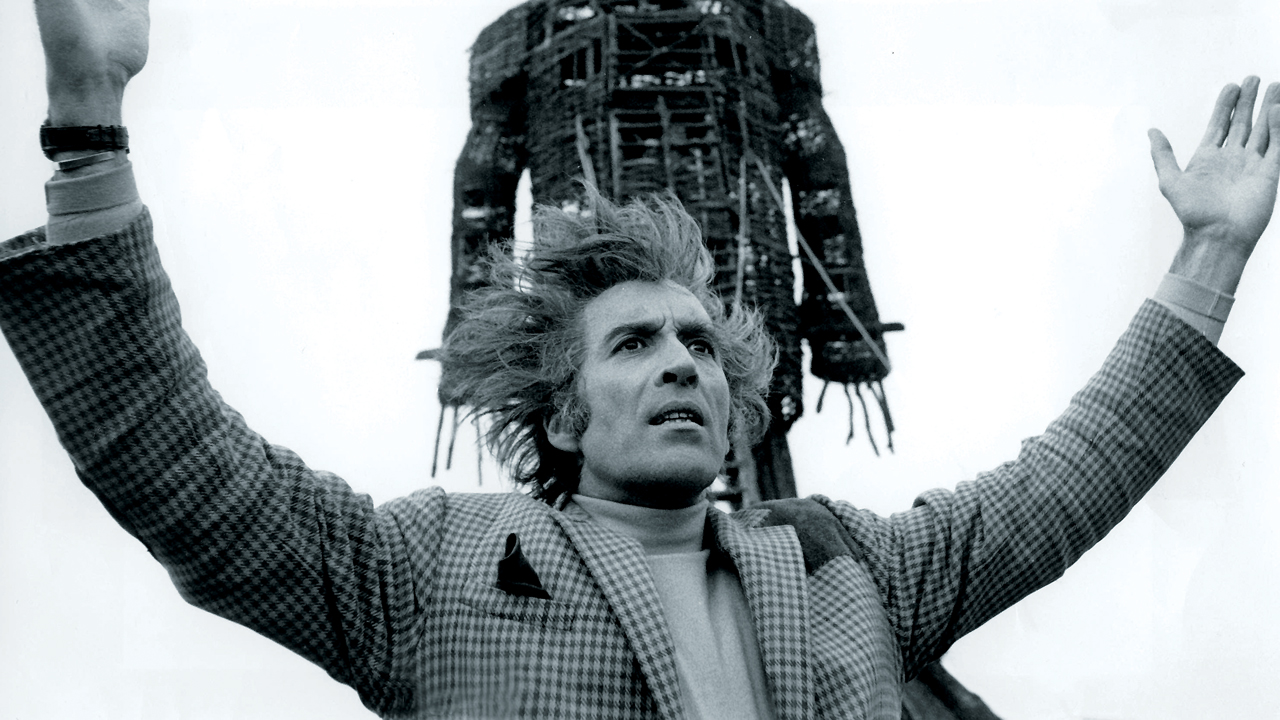
The saga of The Wicker Man is encrusted with controversy. While Lee champions the 1973 horror as a pinnacle of cinema, Michael Deeley, managing director of bankrollers British Lion, damned it as “one of the ten worst films I’ve ever seen”. The movie’s writer cries butchery, spurning the final cut as “bullshit”, while Lee rumbles darkly of “criminal offences” and the likelihood of certain souls facing “an enormous amount of trouble”. Even Britt Ekland’s testosterone-tickling naked jig sufficiently incensed her lover Rod Stewart that he vowed to incinerate every last reel of film. The beaky rocker’s loss was our gain, though, and while the colossal Wicker Man itself burns to oblivion at the tale’s dark climax, the film has been reborn to be appreciated as a primal, fearsome classic.
Seemingly predestined for a strange and contentious fate, The Wicker Man’s origins are very much rooted in the culturequake of its times. Was the Age Of Aquarius the idyll it promised, or was there something older and more dangerous beneath the patchouli scents and beads of the love generation, waiting to reclaim a society that now smugly believed itself civilised? Was there such a chasm between Woodstock and the wild ways of The Wicker Man’s pagan Summerisle? “Here, the old gods aren’t dead,” declares one inhabitant of the remote Scottish island, and the 1960s had seen a huge surge of curiosity for the old, old ways, with books such as Robert Graves’s The White Goddess and Margaret Murray’s The Witch-Cult In Western Europe reflecting the new-found hunger for forgotten knowledge.
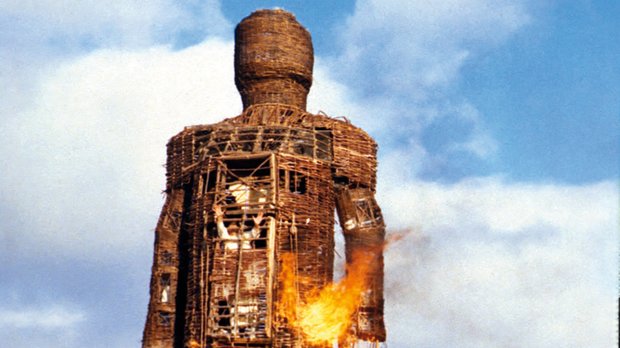
Christopher Lee and film producer Peter Snell sensed an opportunity for a new style of horror, one that jettisoned the tired iconography of caskets and crucifixes. Hoping to fashion a rebuff to Hammer’s overfamiliar gothic cheese, Lee and Snell approached playwright Anthony Shaffer, who had recently scored cinematic success with Michael Caine in Sleuth. They knew that no film had explored the dread of human sacrifice: “The subject opened the world of horror and terror, but also had an intellectual content which gave us a chance to do something quite thoughtful and provocative,” said Shaffer. He originally intended to adapt David Pinner’s novel Ritual, an ambition he abandoned as “a mug’s game” before creating his own tale of paganistic terror. The eye of the picture was Robin Hardy, a British-born director with an appropriate background in religious affairs programmes, perfect for a film that would pit Christianity against the old gods. The Wicker Man was Hardy’s first movie and it would be his last for 13 long years.
In May 1972, Peter Snell was head of production at doldrum-bound British Lion, a company seized by the malaise of the nation’s film industry. Millionaire businessman John Bentley had recently taken charge of the firm and, knowing that the unions feared he was out to asset-strip the company, needed a low-budget piece of box-office gold to shove into turnaround. The Wicker Man was far from a surefire hit, but with Snell, Lee and Shaffer waiving their salaries, the budget became a less-than-daunting £468,000, the same price that had bought the bargain-basement yocks of Carry On Camping in 1969.
The casting united Lee with fellow genre face Ingrid Pitt, a choice that irked Shaffer, who grouched that the film was “beginning to look like a second-rate damned Hammer movie.” No doubt he would have frothed if the equally iconic Peter Cushing had filled the role of the film’s repressed policeman hero, as originally intended (Greatest Living Englishman Michael York was also considered).
Weekly digests, tales from the communities you love, and more
It was Edward Woodward who finally played the doomed and virginal Sergeant Howie, battling the fleshy temptations of Summerisle as he searched for missing local girl Rowan Morrison. Woodward was known from four seasons of Callan and was keen to lose the baggage of the small-screen anti-Bond. “I was looking for something that was entirely different,” said Woodward. “And it was a very exciting story.” Britt Ekland provided much of the fleshy temptation as the landlord’s bawdy daughter, although her Swedish accent was overdubbed with a seductive Scottish lilt. “She was the pretty girl of the moment and to set her up as the love goddess seemed to be a reasonable idea,” said Hardy.
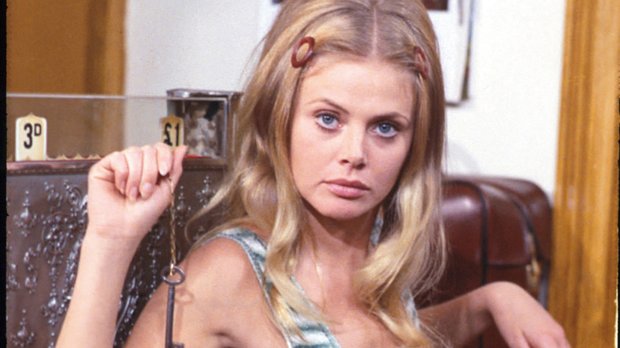
Filming began in Scotland in the bitter autumn of 1972, conjuring the story’s crucial sense of Maytime with a bloom of plastic apple trees and small portable heaters to disguise the frozen breath of the cast. The disquieting sense of Summerisle is one of the film’s triumphs, a prickly otherness created by the bottled hearts and foreskins in the local shops, rutting couples in the fields, ruined, discarded churchyards and trees festooned with navel cords. Pious and puritanical, Howie is the archetypal stranger in a strange land, his faith and his hormones challenged by Ekland’s naked, nocturnal wooing. “We shot the seduction scene mostly at night and it was really quite macabre and eerie,” recalled Woodward, whose performance as a man torn between his Lord and his loins is powerhouse stuff. Ekland refused to bare her bottom for the scene and so the filmmakers hastily scoured the Scottish mainland for a suitable stunt-arse, finally finding a stripper in Glasgow.
Howie’s torture by unabashed horniness is accompanied by one of the film’s gorgeous folk songs. “Would you have a wondrous sight,” tease the lyrics, “the midday sun at midnight?” Performed by folk group Magnet, the song was one of nine written by composer Paul Giovanni. Many were later scrapped because, as Shaffer attests, “the music was running the show. At one point you think it’s a bloody musical.”

Filmed entirely on location, the shoot was hurriedly completed in the shadow of sudden closure. At one point, Shaffer is said to have diverted two money men sent to shut down filming to an entirely erroneous location, simply to buy more time. The climactic scene of the fire sacrifice was done in such a rush that Woodward had no time to learn his lines. As the actor remembered, “In the end, key phrases were written up in giant letters on a series of sheets, which were hung on a cliff about 300 yards opposite. It was the largest crib card in the history of cinema.” The nauseously unsettling power of Howie’s death, screaming holy verse while imprisoned within a blazing wicker effigy, dying in daylight, is all the more astonishing for this. In many ways The Wicker Man is its ending, what The Sunday Times called “a barbarous joke, too horrible for pleasure”.
In reality, the perverse fortunes of The Wicker Man were only beginning. As Christopher Lee soon discovered, the financial clout behind the film had zero belief in the final product. “We shot every word on every page of Tony Shaffer’s wonderful script,” Lee recalled. “When I saw it, I couldn’t believe how much was missing.” British Lion had been bought out by stockholder Michael Deeley, who brought in fellow businessman Barry Spikings to replace Peter Snell. Deeley detested The Wicker Man and, convinced that the pagan fable had no box-office value, he refused it a British release.
Robin Hardy believed that there were politics at play. “Spikings and Deeley had needed some reason to get rid of Peter Snell because he was still managing director, so they had to say that something he’d done was a disaster and they picked The Wicker Man. And it wasn’t too difficult to make it a disaster.” Hardy also insisted that British Lion’s distribution arm – more used to offloading comedies involving birds, buses, rampant sideburns and rotten teeth on the Great British public – had no idea what to do with The Wicker Man and so promptly chose to bury it.
Following an abortive bid to push The Wicker Man at Cannes, Deeley sought the guidance of veteran genre guru Roger Corman on how to pitch the movie to the American market. On Corman’s advice, Deeley took it upon himself to slice some 15 minutes from the film, discarding yards of footage in order to better accommodate US programming bills. “It’s too rushed,” protested writer Shaffer. “It doesn’t allow it to breathe naturally and it’s shocks per second. It’s a very common way of thinking and it reduces fine work to rubble, basically. The thing was butchered.”
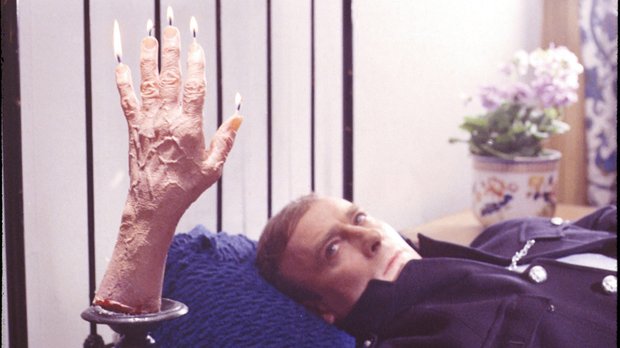
The Wicker Man finally slunk into London’s picture houses in the winter of 1973, propping up a double bill with Nicolas Roeg’s Don’t Look Now. There were no press screenings, nil publicity. “I was horrified,” said Lee, still fiercely proud of the project, “and I did something I’ve never done before or since. I rang up all the critics I could think of and said, ‘Look, I’ll pay for your seats if that’s what it takes, but just please go and see this film as a favour to me.” Lee’s ploy paid off – critics hailed the film and noisily questioned its tawdry treatment by British Lion.
While the film won first prize in 1974’s Festival of Fantastic Films in Paris –“This of course puts the kiss of death on any picture,” said Shaffer. “It’s now an art movie. Shock, terror!” – it fared dismally in the States, flickering briefly at drive-ins then being pulled as a tax loss. In 1976, small-scale New Orleans film distributor Abraxas joined with Robin Hardy to locate the full print, only to meet with a wall of silence from Deeley and Spikings. Finally, producer Peter Snell was led to roadworks beside Shepperton’s vaults and shown a trove of film cans at the bottom of a hole. “The Wicker Man’s down there,” he was told. It seemed that workmen on the M3 motorway had been searching for roadfill. As the film’s editor, Eric Boyd-Perkins recalled, “I knew the vault keeper and I went down when I heard these stories and he said, ‘It was a genuine mistake. I was horrified when it happened.’”
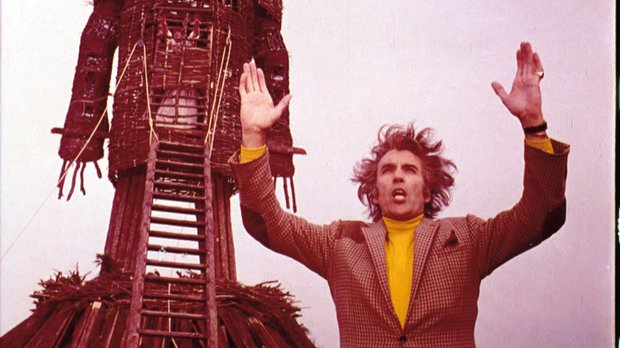
Lee was less forgiving. “How do you destroy 386 cans of film by mistake? That’s in the realm of fantasy. Something very strange is going on here.” Were the negatives deliberately destroyed? “If that is the case, it’s a criminal offence. I personally think that there was a massive cover up and if only we could find out about that we would be able to take very considerable action and some people would be in an enormous amount of trouble.”
Murder or manslaughter? Shaffer blames cultural cowardice, not conspiracy. “The film business – or what’s left of it in England – likes to play safe.” And The Wicker Man, of course, played with fire.
This article is published in tribute to Christopher Lee, who sadly passed away on 7 June 2015.

Nick Setchfield is the Editor-at-Large for SFX Magazine, writing features, reviews, interviews, and more for the monthly issues. However, he is also a freelance journalist and author with Titan Books. His original novels are called The War in the Dark, and The Spider Dance. He's also written a book on James Bond called Mission Statements.


